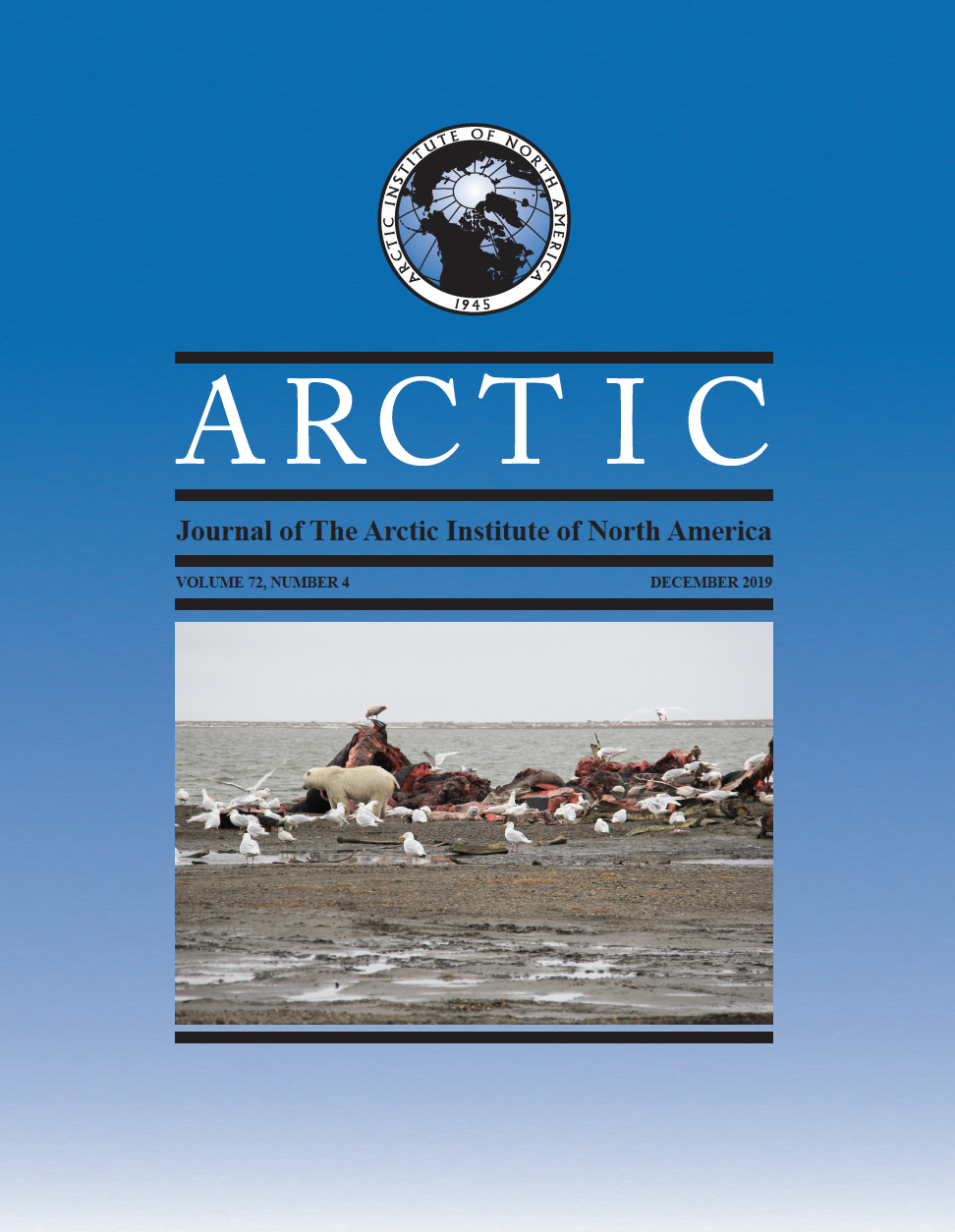Archaeological Investigations at the Ikirahak Site Raise Questions Concerning Taltheilei Land Use in Southern Nunavut
DOI :
https://doi.org/10.14430/arctic69516Mots-clés :
archéologie; culture taltheilei; Nunavut; landes; utilisation des terres; mobilité; saisonnalité; chasse au caribouRésumé
Nous signalons un nouveau site de type taltheilei trouvé sur la côte ouest de la baie d’Hudson, dans le sud du Nunavut. La culture taltheilei est une culture archéologique qui a existé dans les landes de la zone subarctique centrale canadienne il y a de cela 2600 à 300 ans. Les stratégies d’utilisation des terres de cette culture étaient rattachées aux migrations saisonnières des hardes de caribous de Beverly et de Qamanirjuaq dans la toundra et la forêt. De manière générale, les sites trouvés dans la toundra sont interprétés comme des campements d’été de courte durée. Cependant, notre découverte de trois sites uniques de maisons semi-souterraines sur les rives du lac Maguse soulève de nouvelles questions au sujet de la diversité de l’utilisation de la toundra par les Taltheilei. Les données architecturales, fauniques, lithiques et géoarchéologiques recueillies au site d’Ikirahak soutiennent l’hypothèse selon laquelle les groupements de Taltheilei occupaient la toundra jusqu’à l’automne. Nous signalons des preuves en provenance de quatre aménagements de maisons semi-souterraines. Le long du périmètre interne de ces maisons, les plateformes en terrasses suggèrent qu’elles étaient conçues pour servir pendant la saison froide. Des restes de caribous dominent l’assemblage faunique. Des fréquences relatives plus élevées d’éléments appendiculaires laissent entrevoir que le dépeçage secondaire y occupait une grande place. Une grande fraction de l’assemblage faunique est fortement fragmentée et calcinée, ce qui correspond à une transformation importante et à l’utilisation des os comme source de combustible. Les grandes fréquences de débris lithiques entourant le périmètre des planchers d’habitations suggèrent des activités de maintenance. Les concentrations d’éléments multiples dans les sédiments des habitations et de l’ensemble du site indiquent également que les déchets des âtres étaient jetés à l’extérieur. Ces constatations laissent entrevoir de plus longues occupations de la toundra à l’automne, une stratégie d’utilisation des terres vraisemblablement guidée par le comportement propre à la harde de Qamanirjuaq dans la région du lac Maguse, par la chasse automnale et par les objectifs de transformation, de même que par la logistique de la mobilité en termes écologiques. Puisque seulement quatre maisons semi-souterraines d’un seul campement taltheilei ont été étudiées jusqu’à maintenant, nous comprenons toujours peu de choses au sujet de ces endroits dans le monde des Taltheilei et des socioécologies nordiques. Il y a lieu de pousser les recherches plus loin à Ikirahak, là où se trouvent les autres sites de maisons semi-souterraines du lac Maguse, ainsi qu’à d’autres passages de franchissement de l’eau sur la toundra du parcours des caribous de Qamanirjuaq afin de confirmer ou de réfuter nos hypothèses.


